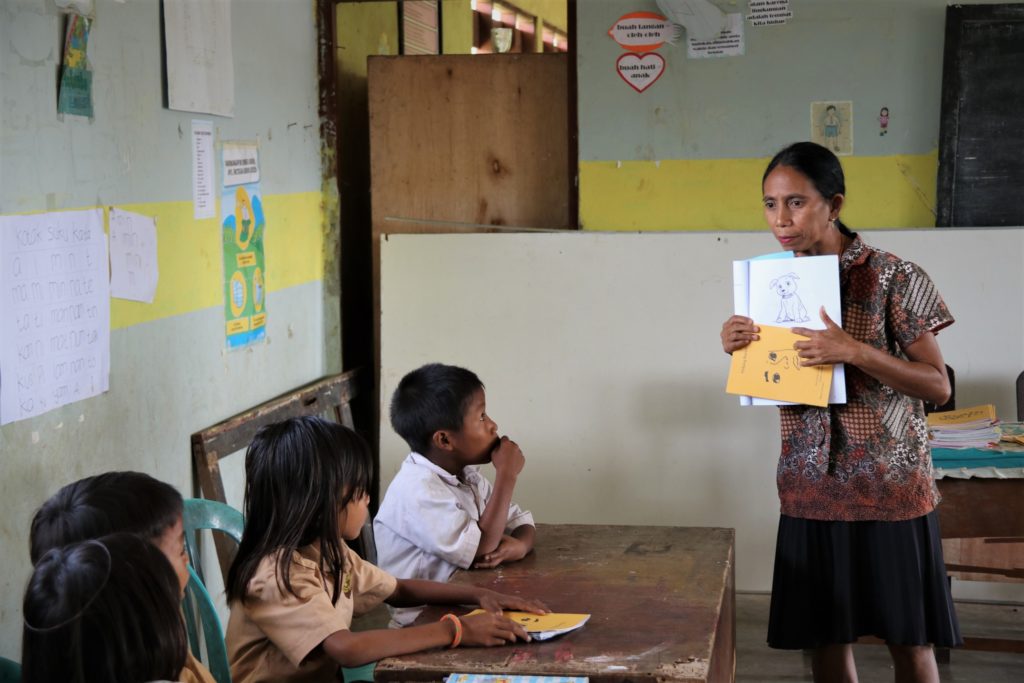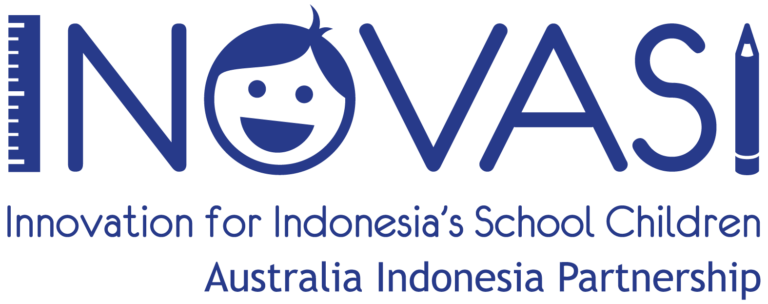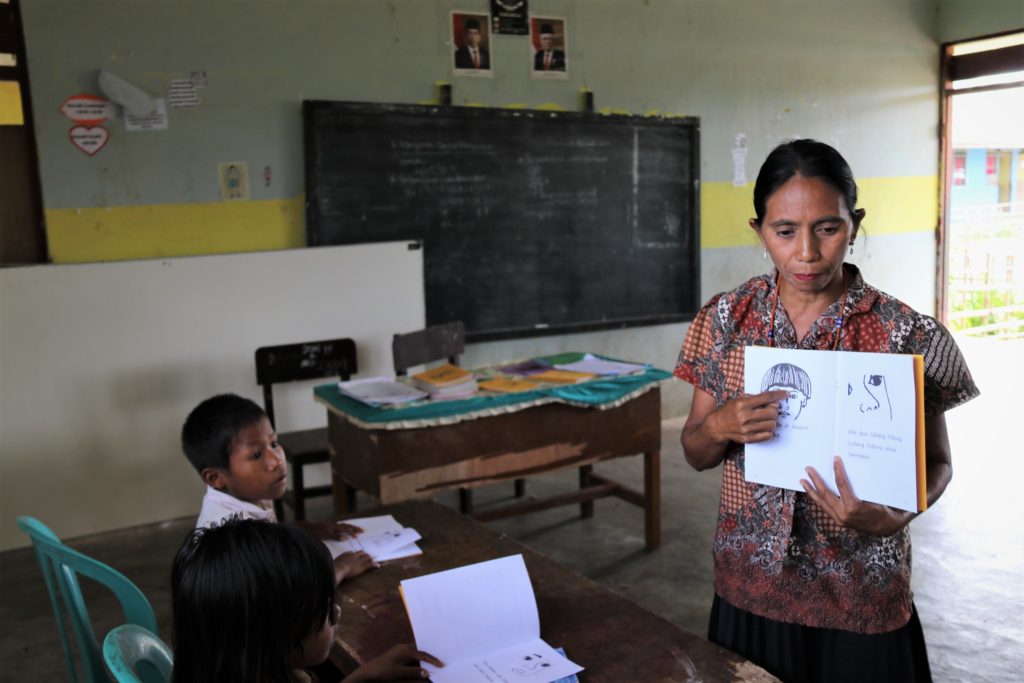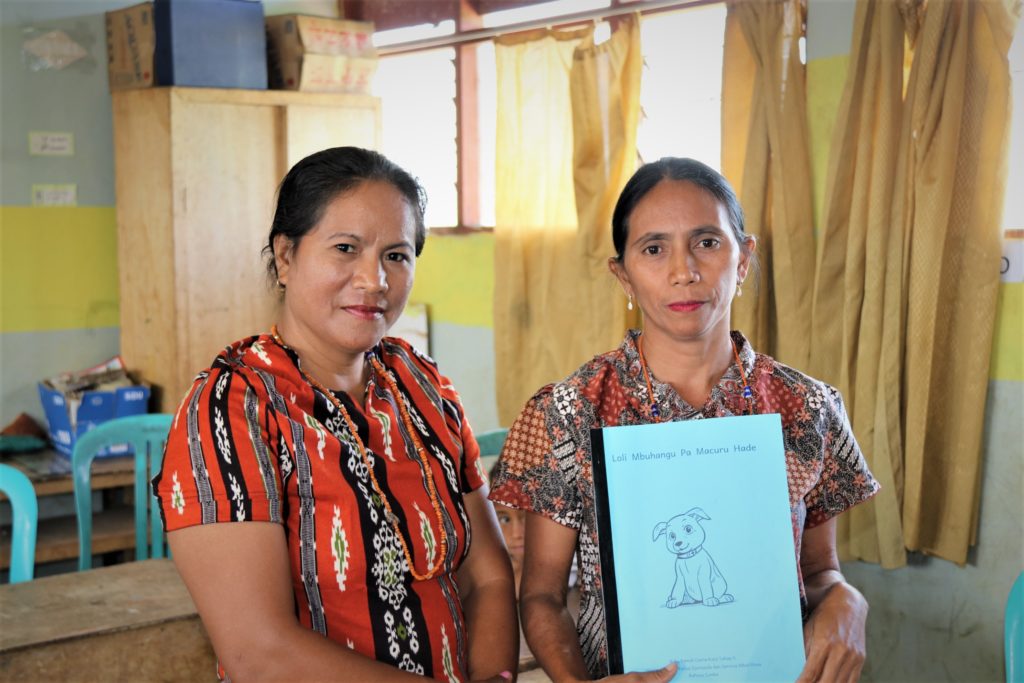
Mariana Dembu Tamar, Principal of SD Masehi Mbatapuhu, noted, “Sometimes, the teachers would mix the use of Indonesian with the local language.” The teacher would first pronounce or read the sentence in Indonesian, followed by a translation in the local language. Unfortunately, instead of being able to understand and speak Indonesian, the students became confused and had difficulty in understanding the lesson.
This situation discouraged the students from conveying their ideas or simply asking questions during the lessons. During the teaching and learning activity, the teacher depended solely on textbooks. Furthermore, when trying to teach the students how to read, the teacher would introduce all the letters of the alphabet from A to Z as well as syllables and words—there was no leveled teaching.
SD Masehi Mbatapuhu is one of INOVASI’s partner schools for the Mother-Tongue Based Multilingual Education (MTB-MLE) program that was conducted by the Sulinama Foundation. Through this program, the Sulinama Foundation helped develop learning media, such as the Big Book, and improved the teachers’ capacity in using these media, especially in using the regional language as a transitional language to Indonesian.
The Big Book was made in both Indonesian and the local language in order to help students understand the lessons. The Sulinama Foundation developed the stories, while the school (the principal and teachers) helped translate the stories into the local language. Other media, such as picture cards and playdough, are used in games to help the students recognize the symbols of each letter.
The Sulinama Foundation also helped in adapting the lessons plans from the 2013 Curriculum (K13) to match the local context. For example, the content of the cultural arts lesson invites the students to be creative in using the items or objects around them, such as leaves, wood, and coconut shells, to make kitchen utensils, such as anambola (a container for fruit or other food items) and cedok (a ladle). While learning, the students are invited to create these things, and they also get to know about their surrounding environment, such as the benefits of trees and their parts.
The lessons are no longer delivered by translating Indonesian into the local language. Now, the teacher uses the first 35 minutes to give an introduction to the material to be discussed in the local language. After that, the teacher uses Indonesian to discuss the material. By using this method, interaction is slowly being fostered in the classroom, and it makes it easier for students to learn with understanding.
Ahad May Nimba, a grade 2 teacher, noted, “I could see how the students’ confidence continued to grow as they recounted what they had read. The same also happened when the students were asked to describe a picture on a picture card.”
According to Mariana, in early 2020, all grade 3 students could already read. There were only two grade 2 students who could not yet read fluently, and there was one student in grade 1 who could read fluently.
This achievement occured after the teachers applied leveled teaching in recognizing letters by using the book titled Ramah Cerna Kata (RCK) or Friendly Word Digest. Recognizing letters is accomplished not only by memorizing the letters but also by using them in stories. For example, in the first stage, there are five letters, A, M, N, I, and T. The story in the book only contains words with these five letters in them. Each level has several book titles to ensure a variety of stories and also to ensure that the students don’t become bored.








